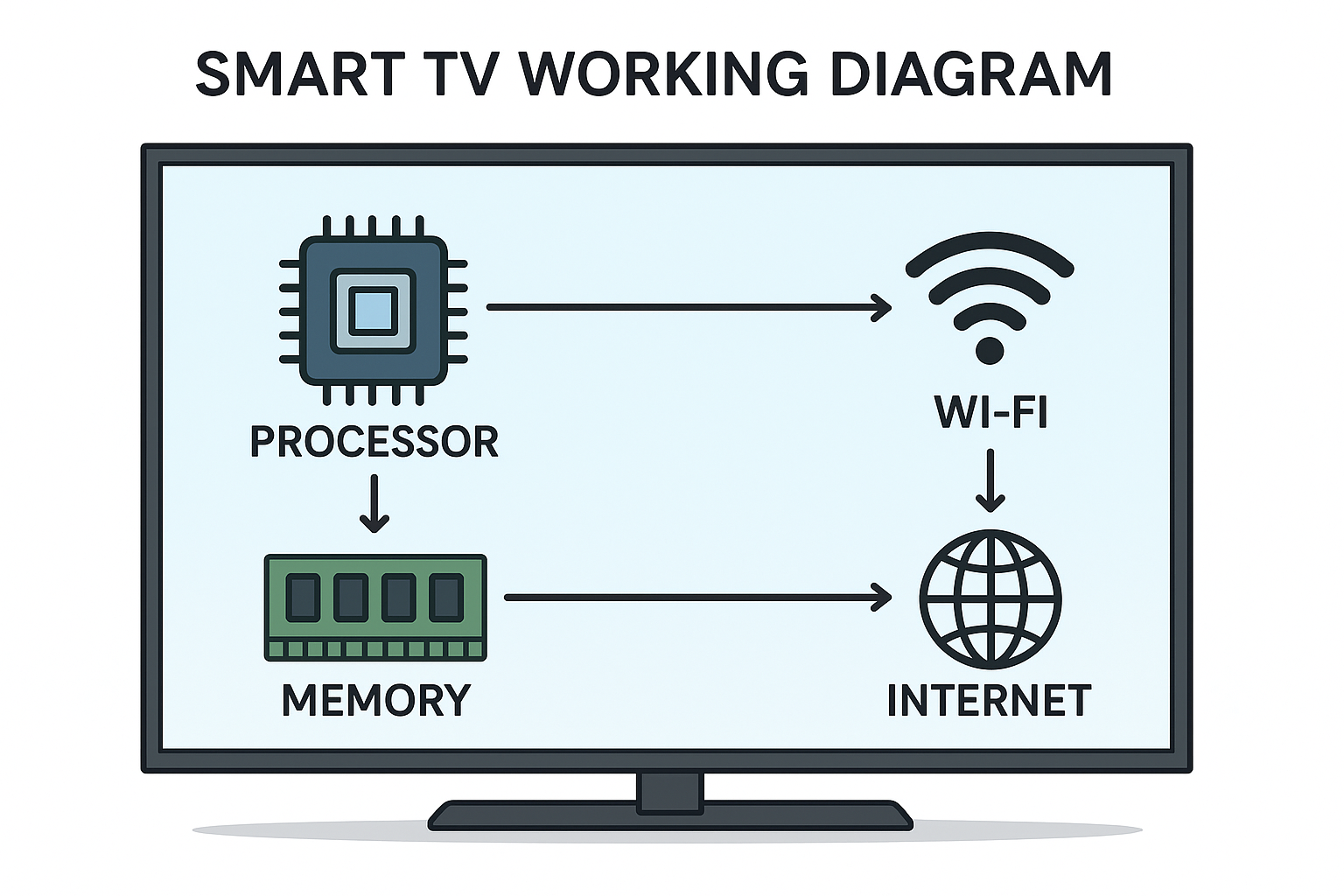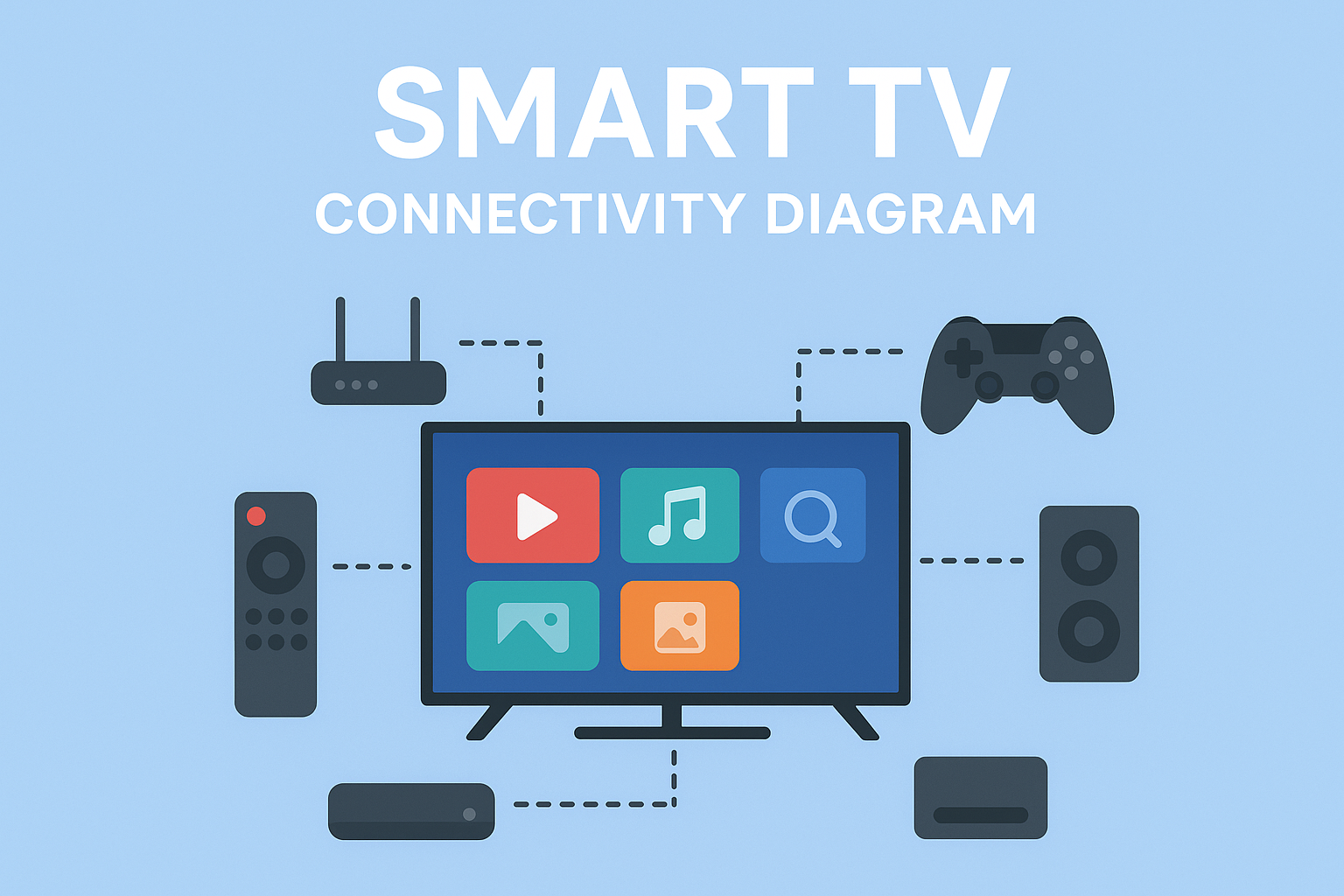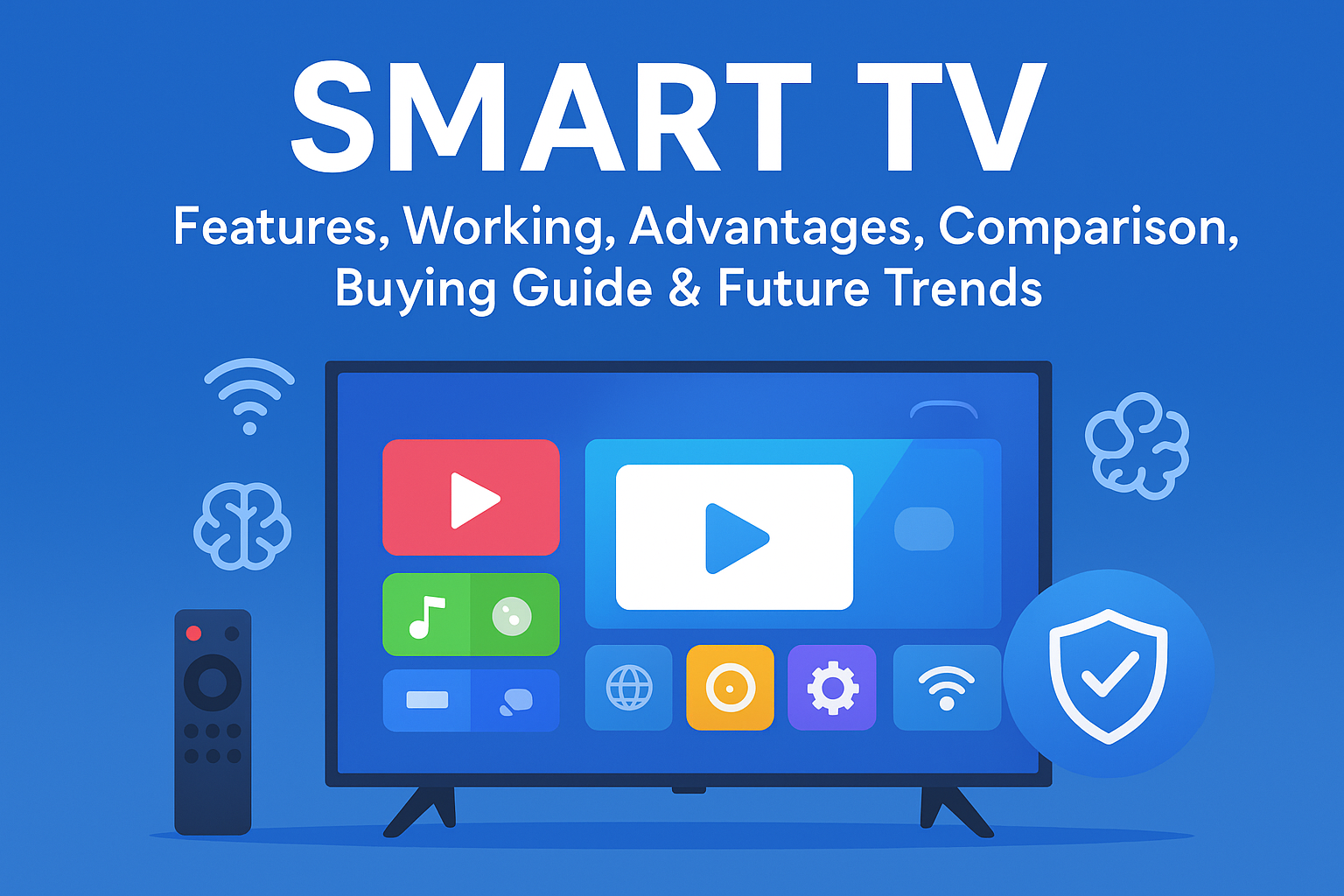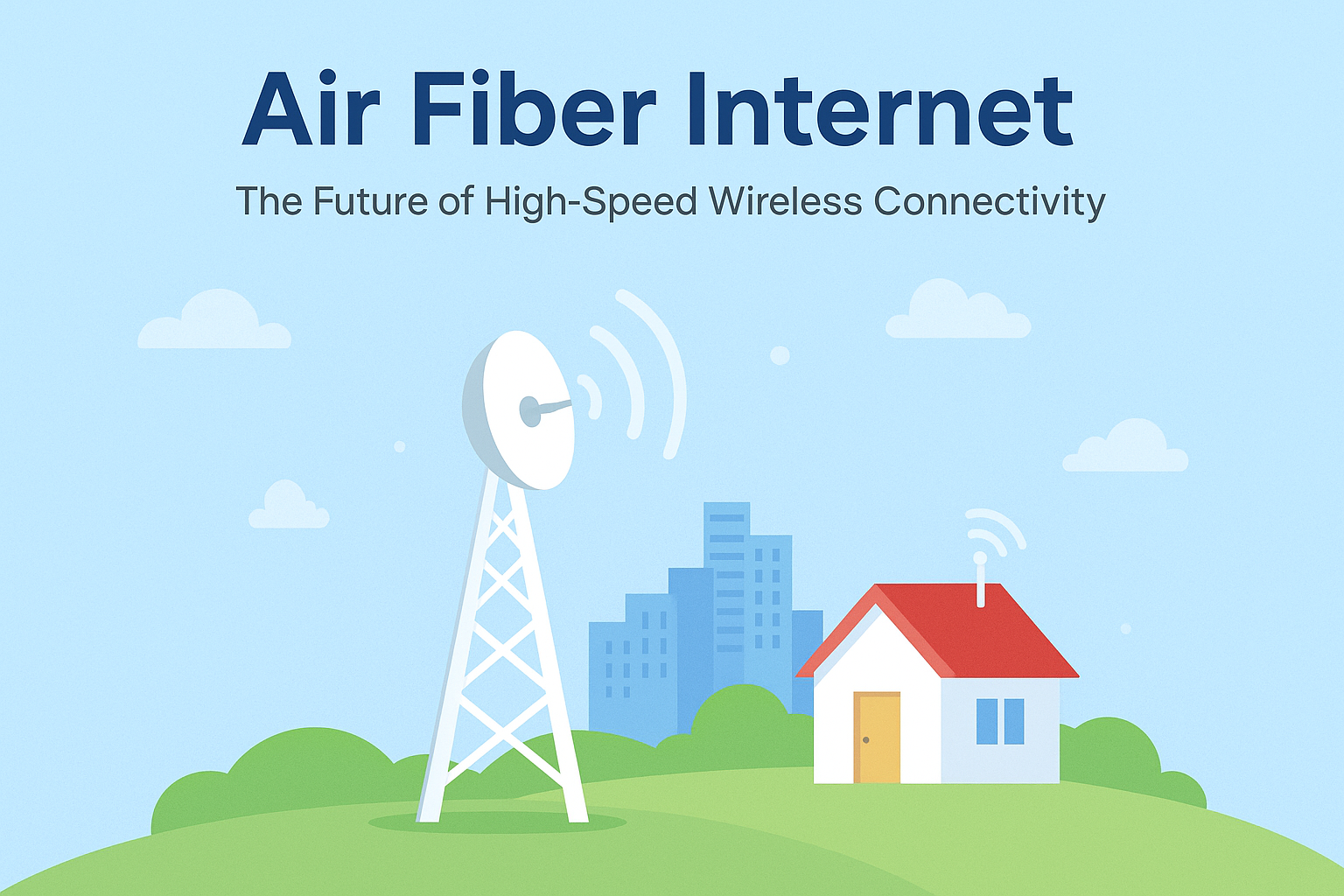Smart TV: The Future of Home Entertainment
A Smart TV is more than just a device for watching your favorite shows—it’s an all-in-one entertainment hub that combines traditional television viewing with the capabilities of the internet. In the modern era of digital connectivity, smart TVs have transformed how we access movies, games, streaming platforms, and even social media, all from the comfort of our living rooms.
Unlike conventional televisions that rely solely on cable or satellite input, smart TVs are equipped with integrated operating systems, internet connectivity (via Wi-Fi or Ethernet), and built-in applications. This makes them similar to smartphones or computers, allowing users to stream online content, browse the web, connect Bluetooth devices, and use various applications effortlessly.
What Is a Smart TV?
A Smart TV is a digital television that integrates internet and interactive Web 2.0 features, allowing users to stream content from services like Netflix, Amazon Prime Video, YouTube, Disney+, and others without external devices. Essentially, it merges the functionality of a traditional TV with a computer or mobile interface.
Most smart TVs run on platforms developed by technology giants such as Google (Android TV), Samsung (Tizen OS), LG (webOS), and Amazon (Fire TV OS). Each platform offers a unique user experience, app ecosystem, and integration level with smart home devices.
How Does a Smart TV Work?
A smart TV connects to the internet, enabling data exchange between the TV and various online content providers. Once connected, the built-in operating system provides a graphical interface where users can access apps, change settings, or search for shows via voice or remote.
- Internet Connectivity: Smart TVs can connect through Wi-Fi or wired Ethernet, depending on your home setup.
- Operating System: Every smart TV runs on a software platform that manages apps, media playback, and updates.
- App Integration: Users can install, update, or remove applications from app stores available on the device.
- Remote Control and Voice: Most models now include voice assistants like Google Assistant, Alexa, or Bixby for hands-free control.
- Data Syncing: Smart TVs can sync with cloud storage, smartphones, and other smart home devices for seamless interaction.

Evolution of Television Technology
The journey from traditional cathode-ray tube (CRT) televisions to modern smart TVs reflects the remarkable evolution of consumer technology. Earlier, TVs were limited to analog signals, bulky designs, and a small number of channels. However, the shift to digital broadcasting and the rise of the internet changed the entertainment landscape completely.
The late 2000s marked the introduction of the first generation of internet-connected TVs. These early models allowed limited browsing and basic streaming. With advancements in broadband speeds, processors, and user interfaces, the current generation of smart TVs delivers ultra-high-definition visuals, fast app loading, and seamless integration with other smart gadgets.
Key Difference Between Smart and Normal TVs
| Feature | Smart TV | Normal TV |
|---|---|---|
| Internet Connectivity | Yes, via Wi-Fi or Ethernet | No, only cable/satellite input |
| Operating System | Built-in OS (Android, Tizen, webOS, etc.) | Not available |
| Apps and Streaming | Supports OTT platforms and games | Requires external devices |
| Voice Control | Available on most models | Not available |
| Price | Generally higher | Lower in comparison |
This major difference explains why smart TVs have become the center of modern entertainment systems. They offer the comfort of internet-based entertainment with ease of use and improved picture quality.
Major Features of Smart TVs
Smart TVs have evolved into feature-rich entertainment centers that go beyond basic television functions. They not only deliver high-quality visuals but also integrate smart functionalities that enhance user experience, connectivity, and control. Below are the most notable features that define a modern smart TV.
1. Built-in Wi-Fi and Ethernet Connectivity
The ability to connect to the internet is the core of a smart TV. Through Wi-Fi or Ethernet, users can stream online content, download apps, and access web-based services. A stable connection allows smooth playback of 4K and 8K videos, live sports, and interactive content without buffering.
2. Operating System and App Store
Every smart TV is powered by an operating system that manages its interface, applications, and updates. Most brands have developed unique platforms optimized for performance and design. These systems include access to an app store, where users can install apps for streaming, gaming, learning, and even home automation.
- Android TV: Developed by Google, offering a vast library of apps and Google Assistant support.
- webOS: LG’s clean and user-friendly interface known for smooth performance.
- Tizen OS: Samsung’s powerful platform with security and fast navigation.
- Fire TV OS: Amazon’s system focused on Alexa integration and Prime Video optimization.
- Roku TV: Popular in many regions for its simple UI and affordable models.
3. Voice Control and AI Assistance
Many smart TVs now feature AI-based voice assistants that make navigation faster and easier. Users can search movies, adjust settings, or control other smart devices simply by speaking. Popular assistants include Google Assistant, Amazon Alexa, and Samsung Bixby. Some models even support multiple assistants simultaneously.
4. Screen Mirroring and Casting
Screen mirroring allows users to project content from smartphones, tablets, or laptops directly onto the TV screen. With technologies like Chromecast, Miracast, and AirPlay, sharing videos, presentations, and games becomes seamless. This feature is especially useful for group entertainment and online meetings.
5. App-Based Streaming Services
Smart TVs support a variety of OTT (Over-the-Top) streaming apps such as Netflix, YouTube, Disney+, Prime Video, Hotstar, and Zee5. Users can log in with personal accounts, customize watchlists, and enjoy ad-free viewing experiences depending on their subscription.
6. Multiple Connectivity Options
Modern smart TVs come equipped with several connectivity ports, including HDMI, USB, Bluetooth, and sometimes optical audio output. These enable users to connect soundbars, gaming consoles, and external storage devices for an enhanced multimedia experience.
7. Smart Home Integration
Today’s smart TVs act as central hubs for smart homes. They can connect and control compatible smart lights, speakers, cameras, and thermostats. Through voice commands or mobile apps, users can manage their home environment directly from the television screen.

Popular Smart TV Brands and Platforms
With growing demand, nearly every major electronics company has entered the smart TV market. Each brand offers unique designs, software, and display technologies to attract different categories of users. Below are some of the most trusted and feature-rich brands dominating the global market:
- Samsung: Known for its QLED displays and Tizen OS with advanced AI upscaling features.
- LG: Offers OLED panels and webOS, known for accurate colors and smooth navigation.
- Sony: Runs on Google TV (Android) providing excellent picture quality and Dolby Vision support.
- OnePlus and Xiaomi: Deliver high-performance Android-based smart TVs at affordable prices in India.
- Amazon Fire TV: Focuses on Alexa voice controls and deep integration with Prime Video and Echo devices.
The selection of a smart TV depends on user preferences, such as display size, resolution, budget, and app ecosystem. Many brands now offer budget-friendly models that still deliver premium viewing quality.
Advantages of Using a Smart TV
Smart TVs bring numerous benefits that redefine how we consume content. Here are the key advantages that make them superior to traditional televisions:
- Access to Online Content: Stream thousands of movies, series, and live events directly through apps.
- All-in-One Device: Eliminates the need for set-top boxes or external streaming devices.
- Regular Updates: Smart TVs receive firmware and app updates that improve performance and add features.
- Enhanced Picture and Sound: Advanced image processors, HDR, and Dolby Atmos technologies enhance viewing quality.
- Convenience: Voice control and mobile app pairing make operation effortless.
- Energy Efficiency: Most modern models come with eco-modes that reduce power consumption.
These advantages collectively turn smart TVs into intelligent multimedia platforms, capable of adapting to the user’s lifestyle and entertainment needs.
Smart Connectivity and Device Integration
Smart TVs are designed to blend seamlessly with today’s connected ecosystems. With IoT (Internet of Things) compatibility, they can interact with a range of smart devices — from speakers and security cameras to home assistants and even kitchen appliances. For instance, users can receive doorbell camera feeds or control their smart air conditioners through their TV interface.
Bluetooth and Wi-Fi Direct further allow easy pairing of wireless headphones, controllers, and keyboards. This makes smart TVs more versatile not just for entertainment, but also for productivity and gaming.
Display Technologies in Smart TVs
One of the most important aspects of any television is its display technology. Smart TVs today offer various types of panels, each with unique features, advantages, and costs. The quality of the display determines how vivid, sharp, and realistic the visuals appear on the screen.
1. LED (Light Emitting Diode)
LED TVs are the most common and affordable type of smart TV displays. They use LED backlighting to illuminate the screen, providing bright visuals with energy efficiency. Although the contrast ratio is lower than OLED, LED panels are long-lasting and suitable for well-lit rooms.
2. OLED (Organic Light Emitting Diode)
OLED displays use self-lighting pixels, meaning each pixel emits its own light. This allows for deeper blacks, vibrant colors, and ultra-thin screens. OLED TVs deliver excellent contrast and viewing angles but are more expensive and can be prone to burn-in if static images remain for long periods.
3. QLED (Quantum Dot LED)
Developed by Samsung, QLED technology enhances traditional LED panels with a layer of quantum dots that boost brightness and color accuracy. QLEDs are excellent for bright environments and offer long lifespans with minimal degradation over time. However, their black levels are not as deep as OLED panels.
4. Mini-LED and Micro-LED
The latest innovation in display technology, Mini-LED and Micro-LED offer superior brightness control and deeper contrasts. They use thousands of tiny LEDs as backlights, providing enhanced HDR performance and reduced halo effects. Micro-LED, although rare and costly, represents the future of premium display technology.
Screen Resolutions and Picture Quality
Screen resolution refers to the number of pixels that make up the image on a TV screen. The higher the resolution, the sharper and more detailed the picture quality appears. Today’s smart TVs are available in several resolutions depending on the screen size and price range.
- HD (720p): Suitable for smaller screens or entry-level models. Provides basic clarity.
- Full HD (1080p): Offers sharp visuals for screens up to 43 inches. Ideal for budget-conscious users.
- 4K Ultra HD (2160p): Most popular today; provides detailed images with lifelike colors and depth.
- 8K UHD: The highest resolution currently available, delivering exceptional clarity but requires high-bandwidth content sources.
Along with resolution, modern smart TVs incorporate technologies like HDR (High Dynamic Range) and Dolby Vision that improve color range, brightness, and contrast for a more cinematic experience.
Sound Quality and Immersive Experience
While display quality grabs most attention, sound plays an equally vital role in the viewing experience. Smart TVs today come with integrated speakers that support audio enhancements such as Dolby Audio, DTS:X, and Dolby Atmos. These technologies provide a 3D-like surround sound effect, making movies and games more immersive.
Many brands also offer features like adaptive sound, which automatically adjusts volume and tone based on the type of content and room acoustics. For a premium experience, users can connect external soundbars, home theaters, or Bluetooth speakers to amplify performance.
Security and Privacy Concerns in Smart TVs
Since smart TVs are internet-connected devices, they also face cybersecurity risks similar to smartphones or computers. Many models come with built-in microphones, cameras, and data collection systems to enhance personalization, which can raise privacy concerns if not handled properly.
Manufacturers continuously release software updates to patch security vulnerabilities. Users are advised to:
- Regularly update firmware and applications.
- Disable unused features like microphones or cameras if not needed.
- Use secure Wi-Fi connections with strong passwords.
- Review privacy policies and permissions before granting app access.
By taking these precautions, users can enjoy the benefits of smart TVs while minimizing potential privacy risks.
Smart TV Price Ranges and Buying Tips
The price of a smart TV depends on several factors, including brand, screen size, resolution, display technology, and smart features. Budget models with HD or Full HD panels are generally affordable, while 4K and OLED TVs are positioned as premium products.
| Category | Typical Screen Size | Approximate Price Range (INR) | Ideal For |
|---|---|---|---|
| Basic HD Smart TV | 32 - 40 inches | ₹12,000 – ₹20,000 | Small rooms or secondary TVs |
| Full HD Smart TV | 40 - 43 inches | ₹20,000 – ₹30,000 | Daily viewing and streaming |
| 4K UHD Smart TV | 43 - 65 inches | ₹35,000 – ₹80,000 | Home entertainment and gaming |
| OLED / QLED Smart TV | 55 inches and above | ₹90,000 – ₹3,00,000+ | Premium cinematic experience |
Tips for Choosing the Right Smart TV
- Determine your room size and ideal viewing distance before selecting screen size.
- Choose at least 4K resolution for long-term usability.
- Check for voice assistant and app compatibility.
- Consider display type based on lighting in your room (OLED for dark rooms, QLED for bright rooms).
- Read customer reviews and check for after-sales support quality.
Selecting the right smart TV is about balancing features, quality, and budget. Understanding these technical aspects ensures you get the best value and long-term performance.
The Future of Smart TVs
The evolution of Smart TVs is far from over. As technology continues to advance, these devices are becoming more intelligent, personalized, and interactive than ever. Future generations of smart TVs will merge artificial intelligence (AI), machine learning, and Internet of Things (IoT) to create a fully connected entertainment ecosystem.
Upcoming innovations focus on making Smart TVs not just display devices but intelligent assistants capable of understanding user behavior, preferences, and emotions. With enhanced AI algorithms, TVs will be able to recommend content more accurately, optimize sound and brightness according to surroundings, and even adjust screen tone based on ambient light.
AI, IoT, and Smart Integration
Artificial Intelligence and the Internet of Things are shaping the next wave of Smart TV capabilities. TVs will act as the central control hub of a smart home, managing lighting, climate, and security devices through voice commands or gestures. With AI-driven voice assistants, users will be able to perform complex actions like setting reminders, checking weather, or even shopping online without leaving their couch.
Integration with other devices such as smartphones, tablets, and smart speakers will also improve through advanced syncing technologies. This will allow seamless transfer of media, unified control via smart remotes or mobile apps, and synchronized content sharing between rooms.
Examples of Future Smart TV Capabilities
- Gesture-based navigation for menu and app control.
- Emotion recognition to adjust sound or brightness based on mood.
- AI-driven content curation based on user habits.
- Built-in home automation dashboards to control smart devices.
- Biometric authentication for personalized profiles.
Sustainability and Energy Efficiency
As consumers and manufacturers become more environmentally conscious, sustainability has become an important focus in Smart TV production. New models are designed to consume less power, use recyclable materials, and feature eco-friendly packaging. Technologies like automatic brightness adjustment and energy-saving modes further reduce electricity consumption.
Brands such as Samsung, LG, and Sony are already implementing Eco Remote Controls powered by solar energy and recycled plastics. These efforts reflect a growing commitment to minimizing carbon footprints while maintaining premium performance.
Challenges and Limitations
Despite their advanced features, Smart TVs are not without challenges. Common issues include limited app compatibility, lagging performance on older models, and software updates that stop after a few years. Additionally, as internet-based devices, they are vulnerable to data tracking, ads, and security breaches if not properly maintained.
Another growing concern is planned obsolescence, where older Smart TV models lose support for new apps and updates. This forces consumers to upgrade more frequently, adding to electronic waste. Manufacturers are now being encouraged to adopt longer software support cycles and modular upgrade systems to reduce this impact.
Conclusion
Smart TVs have redefined how we experience entertainment at home. From offering seamless streaming and personalized recommendations to integrating with smart devices, they represent the intersection of technology and comfort. With continuous innovation in display quality, AI intelligence, and eco-friendly manufacturing, Smart TVs are evolving into essential components of the modern digital lifestyle.
However, while embracing their benefits, users should also remain aware of privacy, security, and sustainability concerns. By making informed choices—selecting trusted brands, maintaining updates, and managing permissions—Smart TVs can truly serve as powerful, safe, and enjoyable tools for entertainment and connectivity.
In the end, a Smart TV is not just a screen — it’s a window into the connected world of tomorrow.


